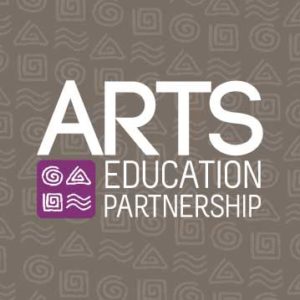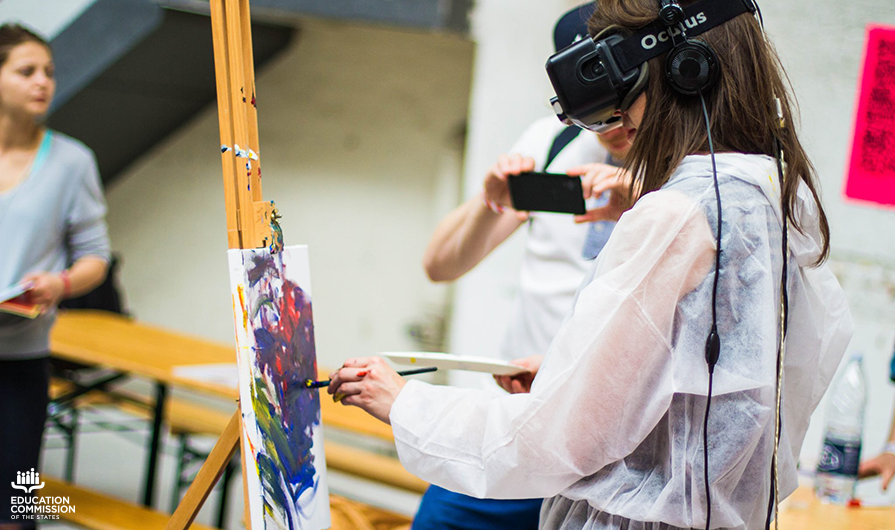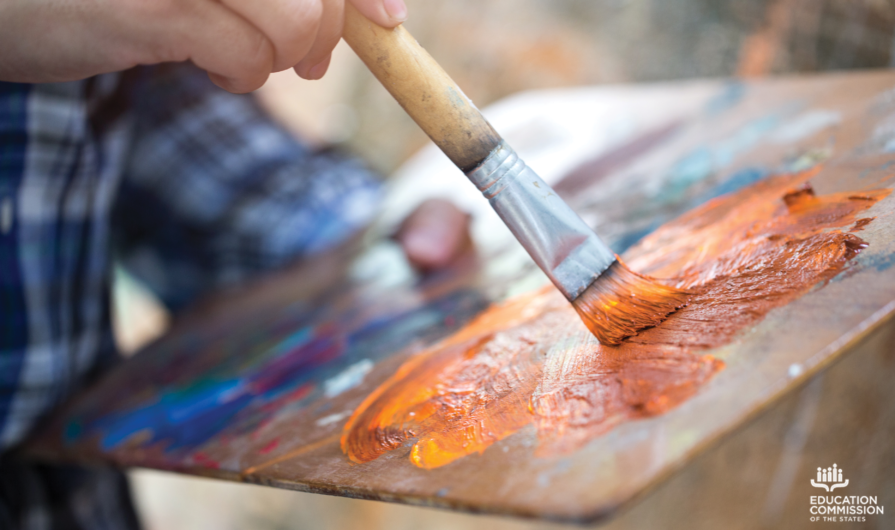
Workforce development, teaching quality and early learning are some of the key issues that governors identified in their 2019 State of the State addresses, and the arts in education can play a beneficial role in advancing work in these areas. To better understand and communicate the positive effects of engaging in arts learning, make sure you bookmark ArtsEdSearch ― a database from the Arts Education Partnership. This national clearinghouse ― which just added new research ― features summaries of more than 275 studies focused on the outcomes of arts education for students and educators, both during and outside the school day.
Here are a just a few ways that demonstrate how the arts can play a role in governors’ education priorities:
[expand title="Workforce Development" expanded="true"]
The arts can provide opportunities for students to think creatively and approach daily activities in innovative ways, helping to develop an adaptive and responsive workforce. For example, one study found that attending schools with a rich arts curriculum significantly benefited students of low socioeconomic status in relationship to college attendance, employment, grades and level of terminal degree. English learners in these same arts-rich schools were also more likely to pursue a bachelor’s degree and earn a bachelor’s degree or higher. At the postsecondary level, study findings show that a STEAM (science, technology, engineering, arts and math) program had positive effects on students, with participants identifying increased focus on professional development to support their career goals and broadening their perspectives in regards to life, career and study challenges.
2019 State Policies: Twenty-two states provide funding for arts education grant programs or schools for the arts.
[/expand]
[expand title="Teaching Quality" expanded="true"]
Engaging the arts in professional development can help educators to think about their teaching in new ways, extending benefits to their students. For example, a creative learning and teaching partnerships program helped teachers make changes in their teaching, change or enhance their career value and develop skills for leading projects and people. Participants in the program also reported enhanced enthusiasm, increased confidence and personal learning development. Additionally, other research shows that service-learning assignments helped undergraduate students in music education to develop classroom management skills, more effective planning and better execution of lessons and teaching in teams. Service-learning assignments also allowed art-therapy students to hone their observation skills and expand their knowledge of art therapy strategies.
2019 State Policies: Twenty-six states specify arts requirements for initial licensure or certification of non-arts teachers and have requirements for endorsement, initial licensure or certification of arts teachers or arts specialists in one or more arts disciplines.
[/expand]
[expand title="Early Learning" expanded="true"]
Research shows that engagement in the arts can be pivotal in early childhood development. For example, preschool children who participated in an eight-week dance program showed significant improvements in sensorimotor synchronization and balance. A separate study showed improved vocabulary knowledge for children who participated in a computerized music training program. The study associates these findings with improvements in brain function for those participating in the music program.
2019 State Policies: All 50 states and the District of Columbia have early childhood or pre-K content or performance standards for any and all disciplines of arts education.
[/expand]
As states revisit existing approaches and look for new ways to address their top education priorities, ArtsEdSearch provides stakeholders with research on how the arts in education can improve outcomes schoolwide and create lasting impacts for students and educators.








